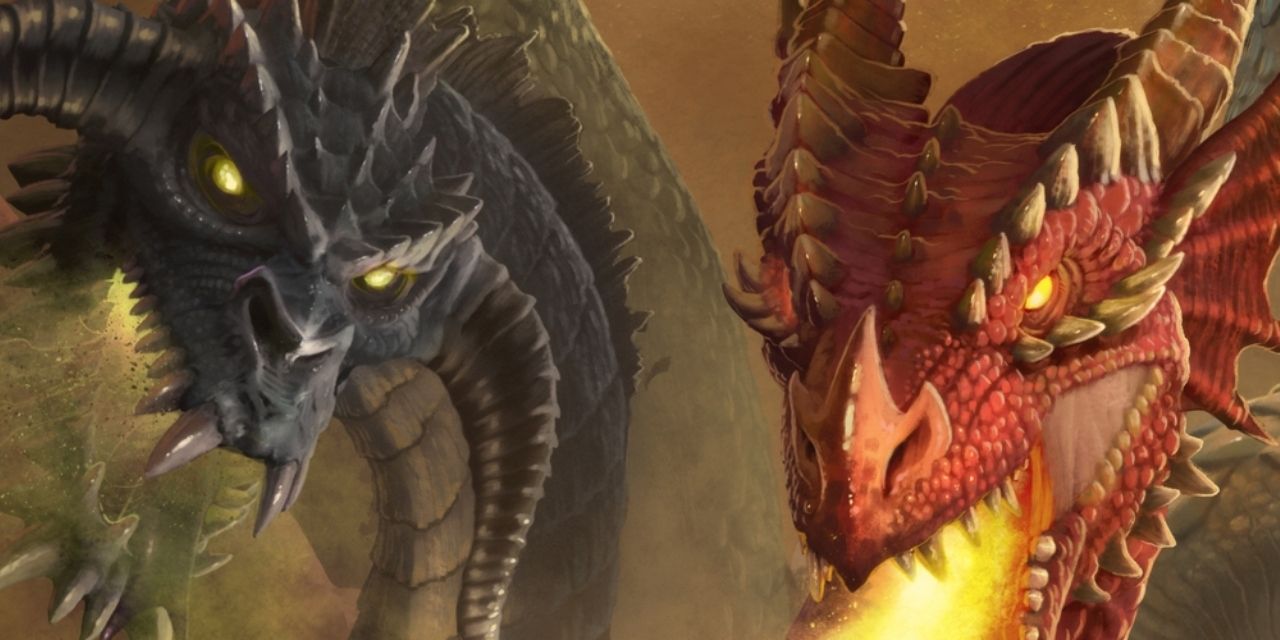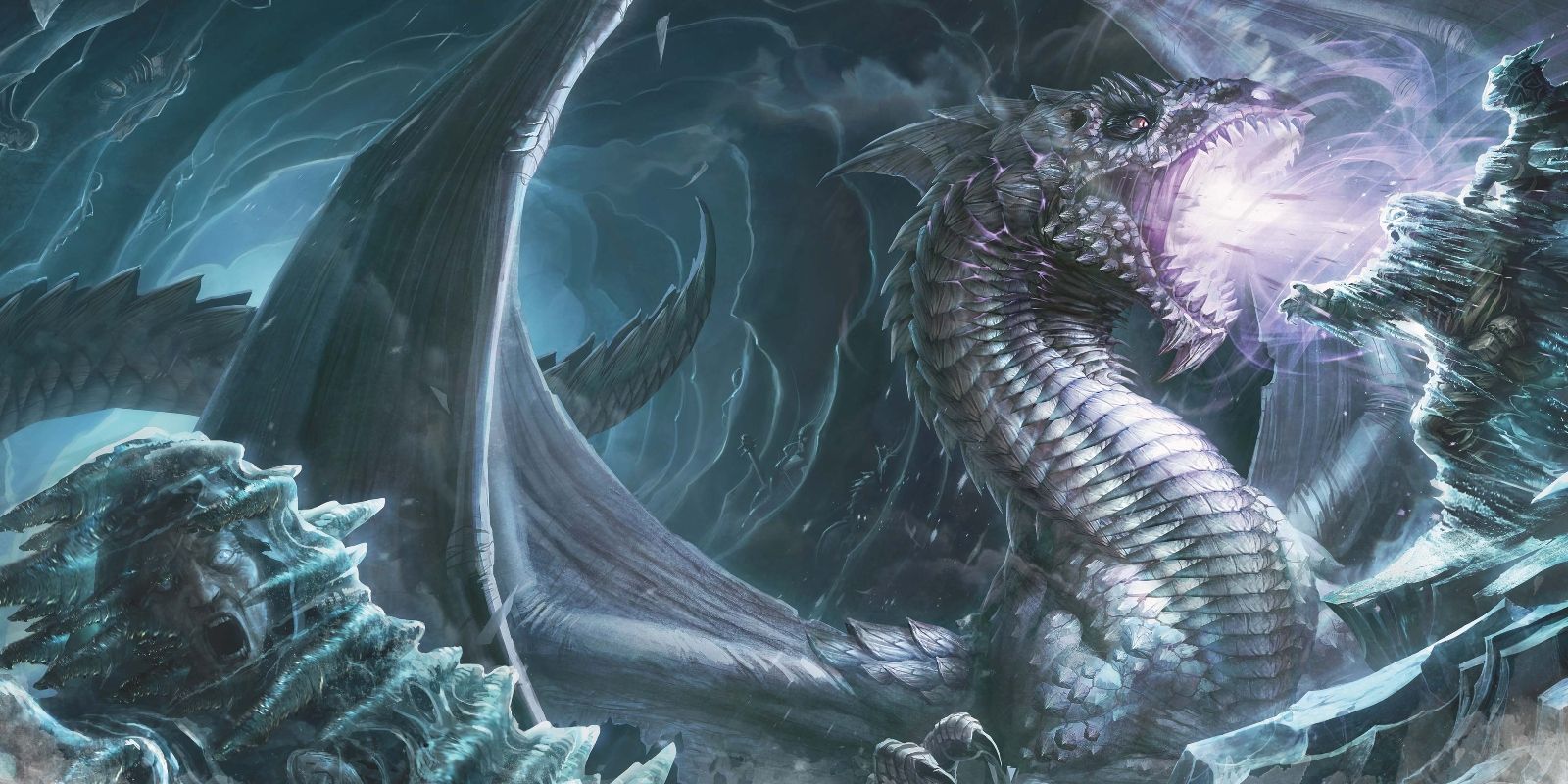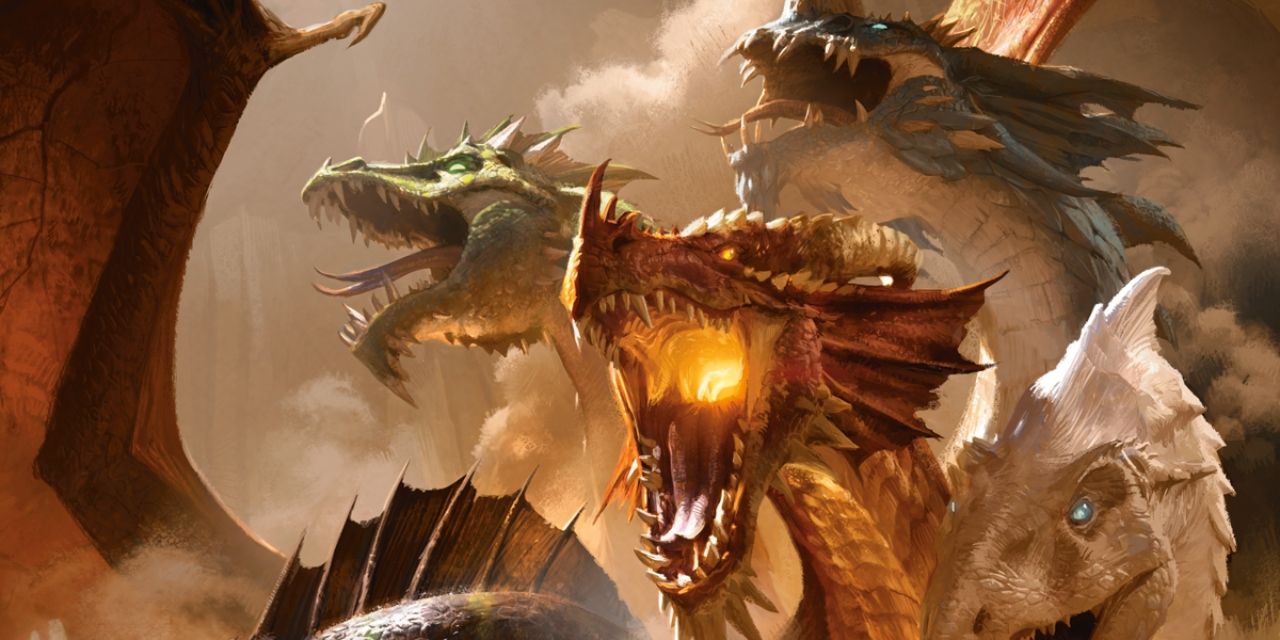
While many Dungeon Masters prefer to homebrew their Dungeons & Dragons adventures, there is a lot to be said for running pre-made adventures. These alleviate the challenging work of creating a world, NPCs, encounters and major adventure hooks, while still allowing DMs to interpret and adjust the content to suit their group. However, not all of these adventures are created equal, and one of Fifth Edition's more controversial offerings is its first: Tyranny of Dragons.
This adventure is split into two parts: Hoard of the Dragon Queen and Rise of Tiamat. Both center around the Cult of the Dragon and its plot to free Tiamat, queen of the evil chromatic dragons. In Hoard, which released alongside 5e itself, players will uncover the Cult's plot and learn of the normally-disparate factions that are willing to join forces in pursuit of taking them down. Rise of Tiamat is a direct sequel in which the party works to stop the Cult while amassing allies and handling the politics involved in assembling a diverse group of unlikely allies.

Tyranny of Dragons is certainly an epic adventure, but it's also flawed. While most consider Rise of Tiamat to be a step up, Hoard of the Dragon Queen has been heavily criticized for its railroading and same-y content, particularly at the beginning. In the original version, the level one party (inexplicably) runs towards a town being attacked by an adult blue dragon instead of running away. The revised edition released to celebrate 5e's fifth anniversary changes this so that the players are already in town, but a good chunk of the adventure still boils down to following a group of cultists on the road.
With this in mind, Tyranny of Dragons is a good adventure for DMs willing to put in the work to make what is there more interesting for their party. While some of its locations and characters go underutilized, the fact that so many places and factions are present opens up plenty of opportunities to tie player characters into the world. Since they'll likely need to do a lot of work to adjust this adventure, Tyranny of Dragons could be a good choice for new DMs hoping to eventually run homebrew content who want to gain experience prepping and running sessions first.

Some DMs may decide to start partway through Hoard of the Dragon Queen or skip right to Rise of Tiamat. However, even those looking to run Hoard from the start of the book should know that there are places where the adventure can be streamlined. For example, Chapter 2 has the party leaving the starting town of Greenest and infiltrating the camp of those responsible for the dragon attack. There, they learn more about the Cult and rescue a monk named Leosin Erlanthar who was taken prisoner. In Chapter 3, after returning to Greenest, the party is sent back to the camp, only to find it abandoned. All that's left is a dragon hatchery, which the party can explore to learn more about the Cult.
All of this back and forth feels excessive, especially for DMs who are more meticulous when it comes to travel. While it wouldn't be too hard to simply skip over Chapter 3, another possible solution is to combine it with the previous chapter. Leosin is already being held away from the other prisoners, so perhaps he is being kept in the hatchery instead of in the camp. This gives players the opportunity to explore the adventure's first dungeon without wasting time traveling between the town and the camp.
There are other opportunities to streamline things, like the long road trip sections of Chapters 4 and 5. The most important thing to keep in mind with Hoard (and all of Tyranny of Dragons) is that, as the DM, you are allowed to make changes to suit your game. If something isn't working, or could be done better, do something different.

While this advice is true for all D&D adventures homebrew and pre-made, the fact that Hoard of the Dragon Queen in particular is very linear means it's all the more important to make players feel invested in the main quest. The best way to do this is through tying character backstories to major NPCs or factions. The book itself offers campaign bonds that players can use, but the deeper and more specific your PCs can get, the more compelled they'll be to follow and challenge the Cult.
For instance, one of the book's bonds involves a character being called to Greenest by Leosin, who once saved their life. Having that established connection will make the mission to save Leosin from the Cult more urgent. Another involves the player being a former member of the Cult who survived their family being wiped out by rivals. This not only makes the ultimate goal of taking the Cult and its leaders out personal, but it also means this player could have more information on the group and its methods -- not to mention the great role-playing opportunities surrounding when the rest of the party learns the truth.

Overall, Rise of Tiamat is a much stronger adventure where players have more options to take on, ignore or even fail at certain tasks. While it centers on the party attending meetings with the Council of Waterdeep where they learn more information and make friends or enemies of different factions, after gaining intel from the Council, its up to them to prioritize certain missions -- or ignore them entirely. How the party chooses to handle things will affect how different groups help out in the end, and certain choices can even weaken Tiamat herself.
However, the book has its issues. For one, despite both books being named for the Dragon Queen, Tiamat herself barely plays a role in the adventure. This makes sense in terms of the story itself, but it may also be a letdown for those hoping for more from this epic villain. That's not the book's only missed opportunity, though. The adventure establishes that there are five Wyrmspeakers, leaders of the Cult of the Dragon who each possess a dragon mask representing one of Tiamat's chromatic dragon heads. However, while four of them play roles between the two books, one (the Blue Wyrmspeaker named Galvan) is barely mentioned.
This is another area where DMs could easily come up with something for him to be doing, whether within an existing event or as a unique side-quest. According to his bio on Wizards of the Coast's website, he has connections to an NPC met in Hoard of the Dragon Queen and the Red Wizards of Thay, a notorious group working with the Cult. Still, his omission seems like a pretty glaring oversight when considering the other Wyrmspeakers have at least one chapter devoted to them.
Regardless of its issues, though, Rise of Tiamat is a better-written adventure, which makes it much easier to run. Especially for parties who have already played through all of some of Hoard and have become invested in the quest to save the world from the Cult of the Dragon and its evil goals, the second part of Tyranny of Dragons provides an epic, high-stakes conclusion.
0 Comments